Recently, I went to the Museum Ons'Lieve Heer Op Solder, (which in a more pleasant, pronounceable name is called the Lord of Our Attic Museum). The Lord of Our Attic Museum was initially very interesting and only got more interesting as you explored the 17th century canal house that had hidden a fantastic Catholic Church in its attic. Outside of purely religious objects and the church itself, the museum offered a glimpse into the everyday life of the 17th century Dutch. The house had in fact been three houses that were all purchased and combined by one wealthy man who sought to create a place of worship in the predominantly protestant Dutch Republic. From its grand entrance, to its winding staircases, to the surprisingly ornate altar, the house was full of fascinating religious objects that seemed out of place with what was otherwise a simple, yet large canal house. In short, the Lord of Our Attic Museum showcased the tolerance of the Dutch Republic even in the 1600s. The church was known about, and yet it was allowed to exist. The only caveat to any practicing religion in the Netherlands was that if they were adherents to any faith but Protestantism, they only had to be subtle enough to keep their places of worship from appearing as places of worship from the street. Tolerance was therefore granted to those who were willing to follow that simple, singular rule.
(photos from the Our Lord of the Attic)
 |
A model of the three canal houses that were combined to make the
church in the attic, as seen from the street |
 |
| The Back of the same model |
 |
| The symbol of the museum |
 |
A 14th century barrel used for making soap that was found during the renovation of this museum.
It showcases the age of the city. |
 |
| A scenic view out of one of the houses many windows. |
 |
| The inside of the simplest kitchen between the three houses |
 |
The fireplace of the simple kitchen.
The tiles above show scenes of children playing. |
 |
Glassware and cookware that was excavated from a sealed cesspool beneath the house.
Also, very gross. |
 |
A disturbingly blurry picture of the fireplace in the wealthiest area
of the house where guests were entertained |
 |
| The crest of the owner's family which shows his position as a linen merchant |
 |
| The centerpiece of the house: the large altar in the hidden church attic |
 |
| A massive, ornate church organ |
 |
Another view of the church that highlights the churches high ceilings and of course,
its beautiful altar in the background |
 |
Saint Nicholas, the patron saint of this church.
Also, weirdly the patron saint of prostitutes, a caveat they humously mentioned. |
 |
| A cherub sculpted onto the marble column |
These next few are just more views of the church:
 |
| A close up on the details of the church organ |
 |
Ornate carpeting of the altar
|
Sorry, this is just going to be more and more photos of different views of the altar.
 |
| Religious objects housed in the back of the altar |
These are religious paintings that are placed on the altar during Easter and Pentecost.
These next few are of an altar to the Virgin Mary:
 |
| A painting bearing the symbols of the Virgin Mary. |
Vestments the Priest would have worn:
Views from outside the attic church that shows the church steeples that rendered the attic church obsolete
 |
| . |
 |
| The same church organ from before but taken from the galleries of the church |
 |
| More details of the church organ |
The back of the church organ:
 |
| Maker's Mark of the organ |
A couple more views of the church from the galleries above:
Two views of the city taken from the church's gallery
Pictures of the church's confessional
The rest of the photos are of paintings or different church ornaments and most have a picture of the description in the next photo: (also a few of the nicer kitchen on the property)










































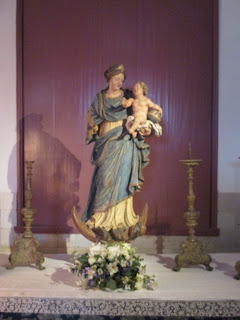








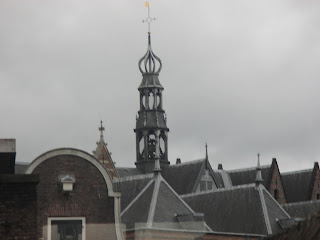

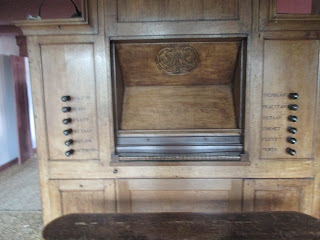





















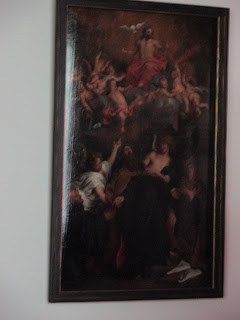


















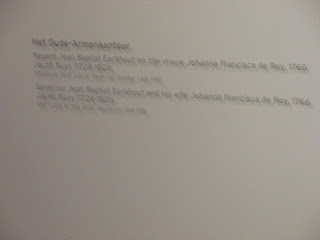




















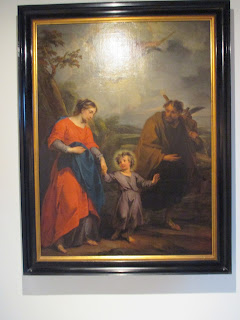











No comments:
Post a Comment